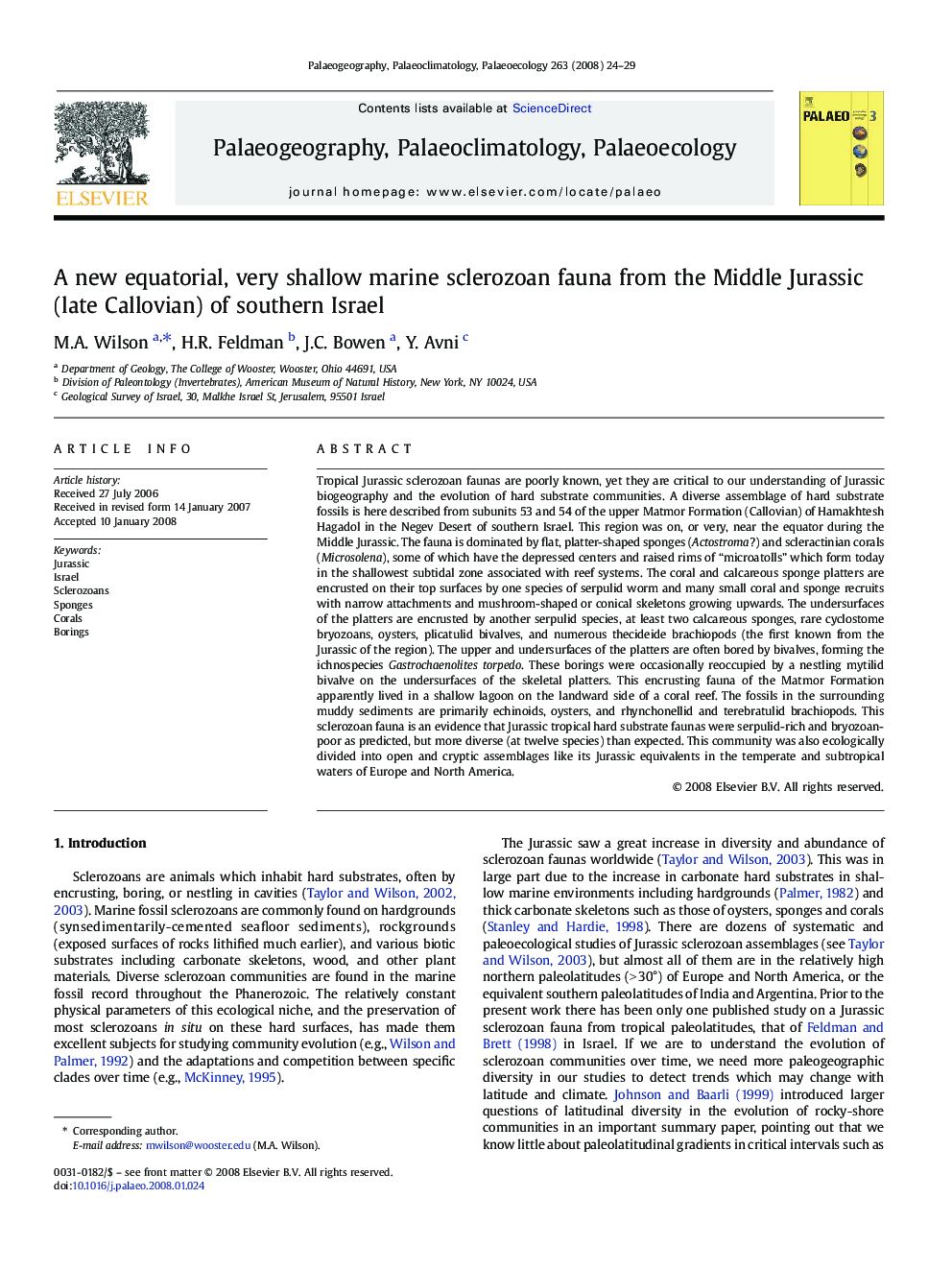| کد مقاله | کد نشریه | سال انتشار | مقاله انگلیسی | نسخه تمام متن |
|---|---|---|---|---|
| 4468494 | 1622328 | 2008 | 6 صفحه PDF | دانلود رایگان |

Tropical Jurassic sclerozoan faunas are poorly known, yet they are critical to our understanding of Jurassic biogeography and the evolution of hard substrate communities. A diverse assemblage of hard substrate fossils is here described from subunits 53 and 54 of the upper Matmor Formation (Callovian) of Hamakhtesh Hagadol in the Negev Desert of southern Israel. This region was on, or very, near the equator during the Middle Jurassic. The fauna is dominated by flat, platter-shaped sponges (Actostroma?) and scleractinian corals (Microsolena), some of which have the depressed centers and raised rims of “microatolls” which form today in the shallowest subtidal zone associated with reef systems. The coral and calcareous sponge platters are encrusted on their top surfaces by one species of serpulid worm and many small coral and sponge recruits with narrow attachments and mushroom-shaped or conical skeletons growing upwards. The undersurfaces of the platters are encrusted by another serpulid species, at least two calcareous sponges, rare cyclostome bryozoans, oysters, plicatulid bivalves, and numerous thecideide brachiopods (the first known from the Jurassic of the region). The upper and undersurfaces of the platters are often bored by bivalves, forming the ichnospecies Gastrochaenolites torpedo. These borings were occasionally reoccupied by a nestling mytilid bivalve on the undersurfaces of the skeletal platters. This encrusting fauna of the Matmor Formation apparently lived in a shallow lagoon on the landward side of a coral reef. The fossils in the surrounding muddy sediments are primarily echinoids, oysters, and rhynchonellid and terebratulid brachiopods. This sclerozoan fauna is an evidence that Jurassic tropical hard substrate faunas were serpulid-rich and bryozoan-poor as predicted, but more diverse (at twelve species) than expected. This community was also ecologically divided into open and cryptic assemblages like its Jurassic equivalents in the temperate and subtropical waters of Europe and North America.
Journal: Palaeogeography, Palaeoclimatology, Palaeoecology - Volume 263, Issues 1–2, 13 June 2008, Pages 24–29